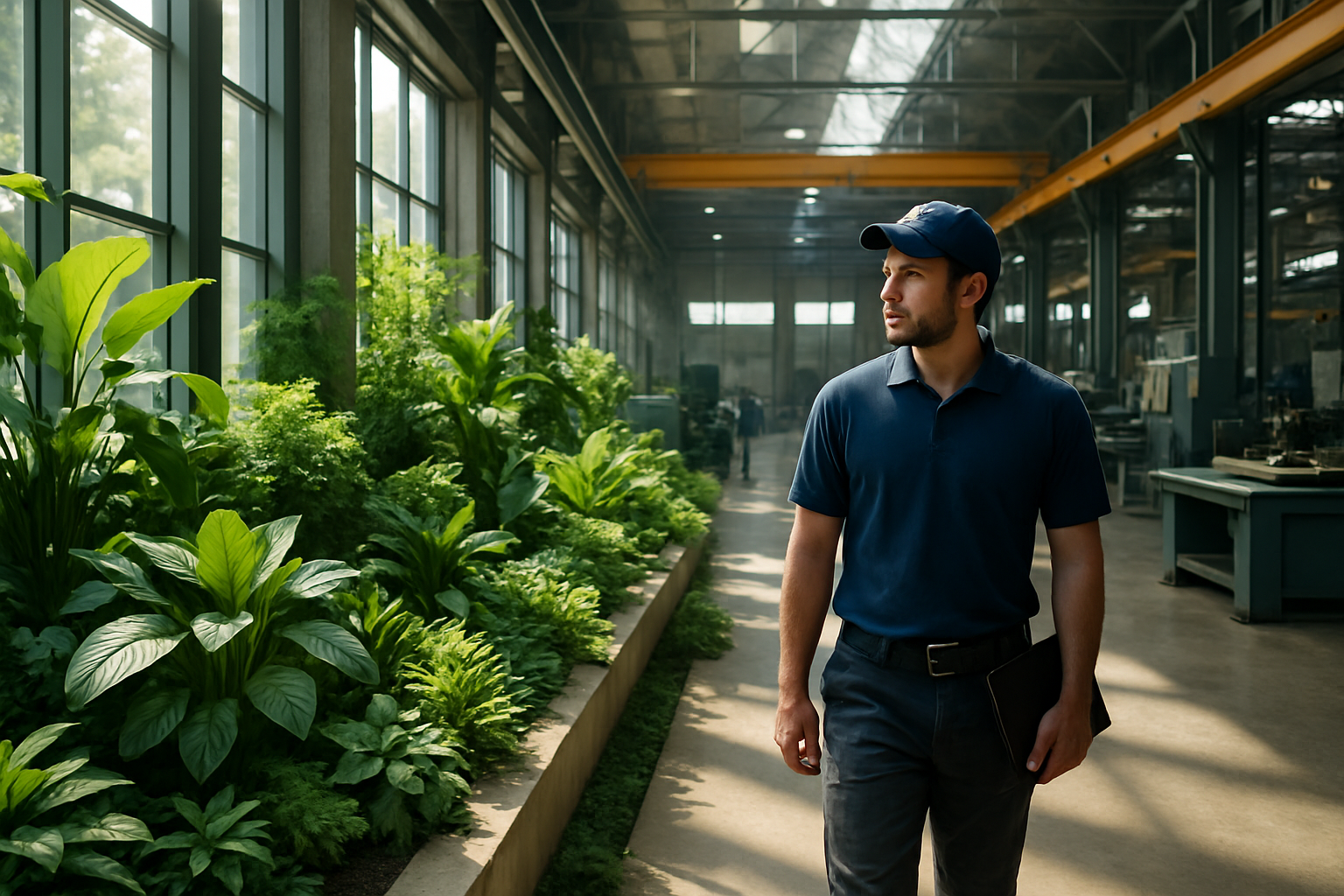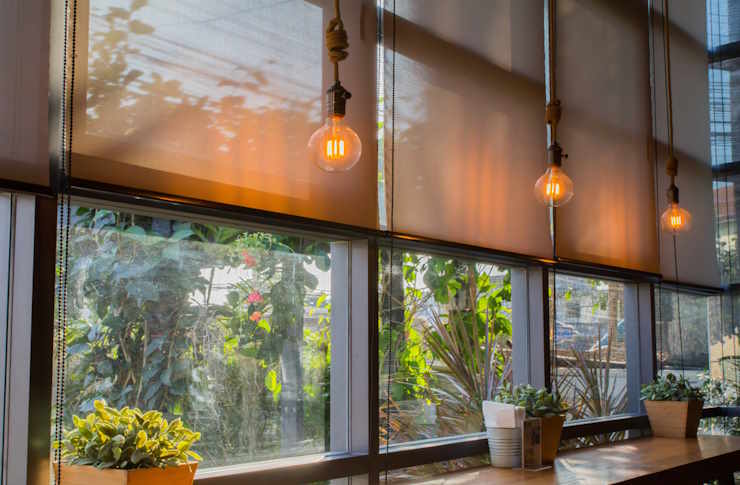Leveraging Biophilic Design in Industrial Spaces
Integrating nature into industrial environments for enhanced productivity and well-being In today's competitive industrial landscape, companies are constantly seeking innovative ways to boost productivity, employee satisfaction, and overall operational efficiency. One emerging trend that's gaining traction is the implementation of biophilic design principles in industrial spaces. This approach, which involves incorporating natural elements into the built environment, is revolutionizing the way we think about industrial architecture and workspace design.

In the context of industrial design, biophilic principles seek to bridge the gap between our inherent need for natural connections and the often sterile, artificial environments of manufacturing facilities and warehouses. By bringing elements of nature into these spaces, companies aim to create more humane, productive, and sustainable work environments.
The Science Behind Biophilic Industrial Design
Numerous studies have demonstrated the positive impacts of biophilic design on human health, well-being, and productivity. Research conducted by environmental psychologists and workplace strategists has shown that exposure to natural elements can reduce stress, improve cognitive function, and enhance overall job satisfaction.
In industrial settings, where workers often face long hours in enclosed spaces, the benefits of biophilic design can be particularly significant. A study by the University of Oregon found that employees with views of nature took 19% fewer sick days than those without. Another study by Human Spaces revealed that workers in environments with natural elements reported a 15% higher level of well-being and were 6% more productive.
Key Elements of Biophilic Industrial Design
Implementing biophilic design in industrial spaces involves more than simply adding a few plants. It requires a holistic approach that incorporates various natural elements and patterns. Some key components include:
-
Natural light: Maximizing daylight exposure through strategically placed windows, skylights, and light wells.
-
Green spaces: Incorporating indoor gardens, living walls, and outdoor break areas with native vegetation.
-
Natural materials: Using wood, stone, and other natural materials in construction and interior design.
-
Water features: Installing fountains, ponds, or other water elements to create a calming atmosphere.
-
Biomimicry: Incorporating designs and patterns that mimic natural forms and structures.
Case Studies: Biophilic Design in Action
Several forward-thinking companies have already embraced biophilic design principles in their industrial facilities, with impressive results. For instance, a major automotive manufacturer in Germany redesigned its assembly plant to include extensive green spaces, natural lighting, and indoor water features. The company reported a 25% reduction in absenteeism and a 14% increase in productivity within the first year of implementation.
Similarly, a pharmaceutical company in the United States incorporated a large indoor garden and living wall into its production facility. The result was a 12% improvement in employee satisfaction scores and a notable decrease in workplace accidents.
Overcoming Challenges in Implementation
While the benefits of biophilic industrial design are clear, implementing these principles in existing facilities can present challenges. Cost considerations, space constraints, and regulatory compliance are common hurdles that companies must overcome.
To address these issues, many businesses are taking a phased approach, starting with smaller initiatives like adding indoor plants or improving natural lighting. As the benefits become apparent, they gradually expand their biophilic design elements. Additionally, partnering with experienced architects and industrial designers who specialize in biophilic principles can help companies navigate the complexities of implementation.
Practical Strategies for Biophilic Industrial Design
• Conduct a biophilic audit of your current facility to identify opportunities for improvement
• Prioritize natural lighting by installing skylights or light tubes where possible
• Create green break areas with a variety of plants and comfortable seating
• Use nature-inspired colors and patterns in interior design elements
• Implement a circadian lighting system to mimic natural light patterns throughout the day
• Incorporate natural sounds, such as flowing water or bird songs, in common areas
• Install operable windows to allow for natural ventilation when weather permits
• Use reclaimed wood or other natural materials for furniture and fixtures
As industries continue to evolve, the integration of biophilic design principles in industrial spaces represents a significant opportunity for companies to improve their operational efficiency, employee well-being, and overall sustainability. By reconnecting workers with nature, even in the most unexpected places, businesses can create environments that not only enhance productivity but also promote a healthier, more satisfied workforce. As more companies recognize the tangible benefits of this approach, we can expect to see a growing trend towards more naturalistic, human-centric industrial spaces in the years to come.





